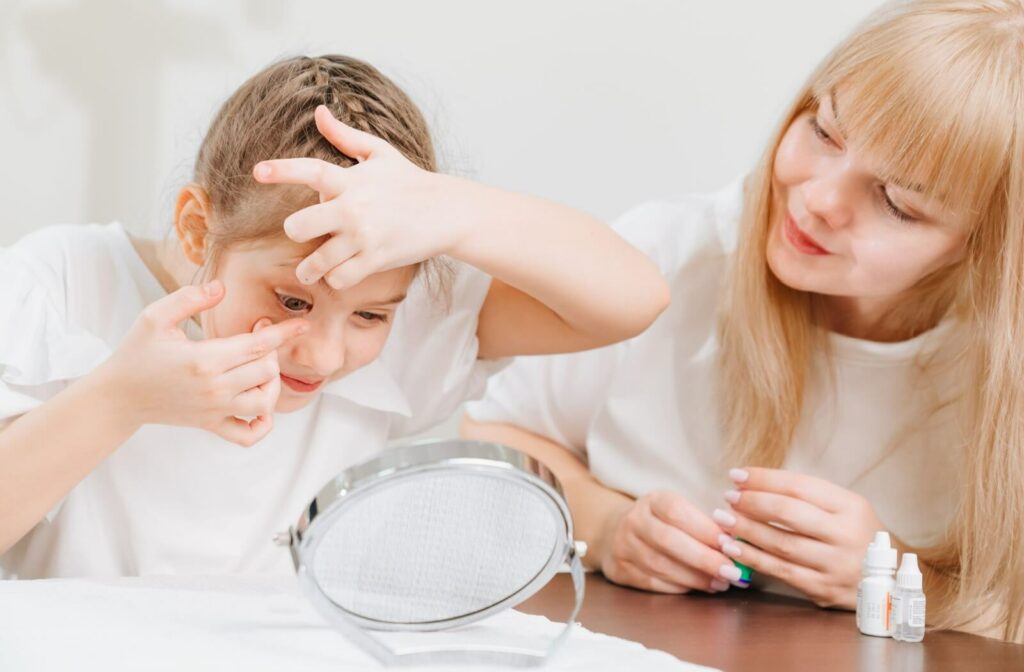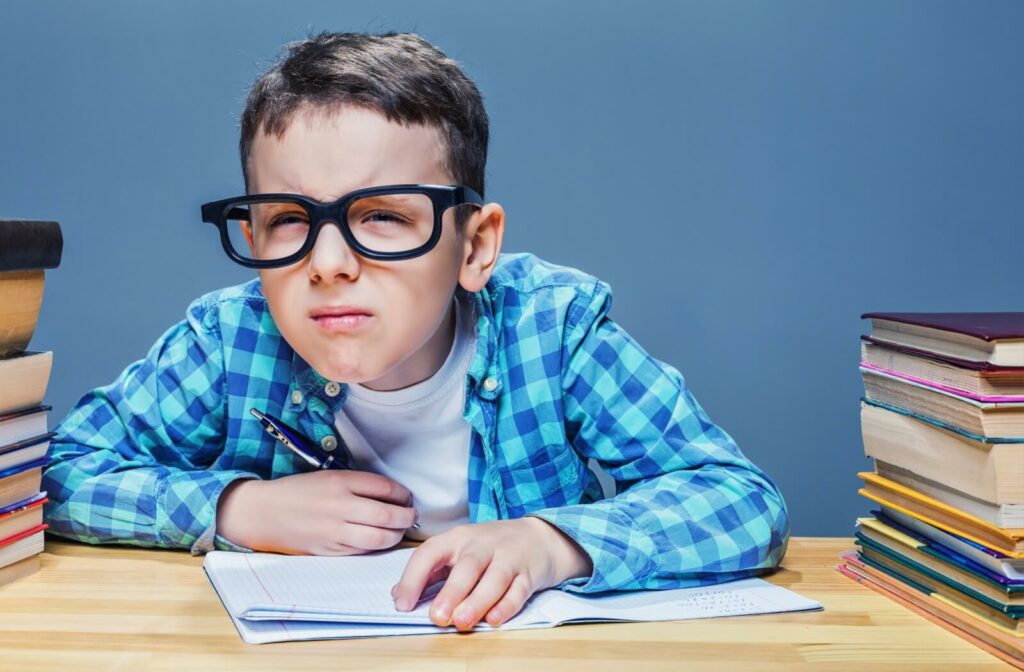With the school year approaching, many families are gearing up for more reading, writing, and looking at chalkboards. As a parent, you want your child to be in the best position to succeed in school and in life. But if you find your child is holding things close to see or regularly getting headaches, you may be concerned about myopia.
Myopia is common, and its prevalence is rising. More commonly known as nearsightedness, myopia typically begins between the ages of 6 and 12 and then gradually gets worse until a child’s late teens or early 20s. However, modern eye care offers ways to slow myopia’s progression so that your child ends up with a lower prescription power than they would have otherwise needed.
If your child shows signs of myopia, the first step is bringing them in for a comprehensive eye exam. We can then discuss myopia control options.
What Is Myopia & How Does It Get Worse?
Otherwise known as nearsightedness, a person with myopia sees near objects as blurry while further away objects remain clear. This happens when the cornea is too curved or the eye is too long.
If your child has myopia, they’re not alone. According to the American Optometric Association (AOA), myopia affects around 30% of the American population. Research shows that rates of myopia are rising rapidly, with one study estimating that by 2050, half the world’s population will have myopia and 10% of the population will have severe myopia.
Causes of Myopia
We’re not entirely certain what exactly causes myopia, but children with a biological parent who has myopia are more likely to develop it themselves. There may also be environmental factors that contribute to myopia.
You can’t exactly prevent myopia because there’s a genetic component. But some experts believe that more outdoor time and less time spent on near work can help lower their risk.
Symptoms of Myopia in Children
Your child may be experiencing myopia if they exhibit any of the following:
- Expressing that objects at a distance look blurry, while objects up close remain clear
- Complaints about headaches and eye strain
- Squinting or holding things up close
- Challenges with schoolwork, including problems with attention
- Feeling tired when doing things that require distance vision, such as some sports
The only way to know for certain if your child has myopia is to visit an optometrist for an eye exam. Children should get their eyes checked before first grade, and every year after. Children at greater risk of eye conditions may require more frequent exams.
How Myopia Progresses
Myopia usually begins between the ages of 6 and 12. It progresses quickly between the ages of 7 and 10, but typically stabilizes by a person’s late teens. However, one study showed that more than one-third of adults involved in the study experienced myopia progression in their 20s.
It’s possible for myopia to start in adulthood, but this is usually due to eye stress or diabetes.

Myopia Control Methods
Thanks to modern eye care, we now have methods to slow the progression of myopia. This allows young people to have a lower prescription by the time they grow up than if they didn’t undergo myopia control treatments.
Why It’s Important
But why slow myopia in the first place? Is it not enough to wear glasses or contact lenses?
Myopia control is important because having high myopia is associated with a higher risk of developing serious eye conditions like retinal detachment, macular degeneration, and cataracts.
Myopia control should be started as soon as possible. This way, the child has more time to slow their progression of nearsightedness, therefore having the least possible nearsightedness when they reach adulthood.
Ways to Slow Myopia
Methods to slow myopia include:
- Low-dose atropine eye drops: These types of eye drops are typically used to dilate eyes for a dilated eye exam. But in low doses, they can help slow the progression of myopia in children.
- Orthokeratology (ortho-k) contact lenses: This type of contact lens is worn overnight while a child sleeps. It reshapes the cornea during nighttime, and the child doesn’t need to wear them during the day.
- Certain types of contact lenses and eyeglasses: Regular contact lenses and eyeglasses that correct nearsightedness or farsightedness will not slow myopia. But specific designs have been created that can. These are worn during the day.
For a more in-depth understanding of these methods, talk to your optometrist at your child’s next eye exam.
Care for Your Children’s Eyes
As a parent, you want the best for your child. The reality is that myopia isn’t totally preventable, though habits like increasing outdoor time and limiting near work (such as screen time) are believed to help lower risk. Scheduling regular eye exams for your child can also help eye care professionals detect myopia early, allowing for earlier intervention.Our team at Precision Eye Care values cultivating strong relationships with every one of our patients. Whether you’re seeking myopia control or your child is due for the next eye exam, book an appointment at our Bridgeport clinic today.



